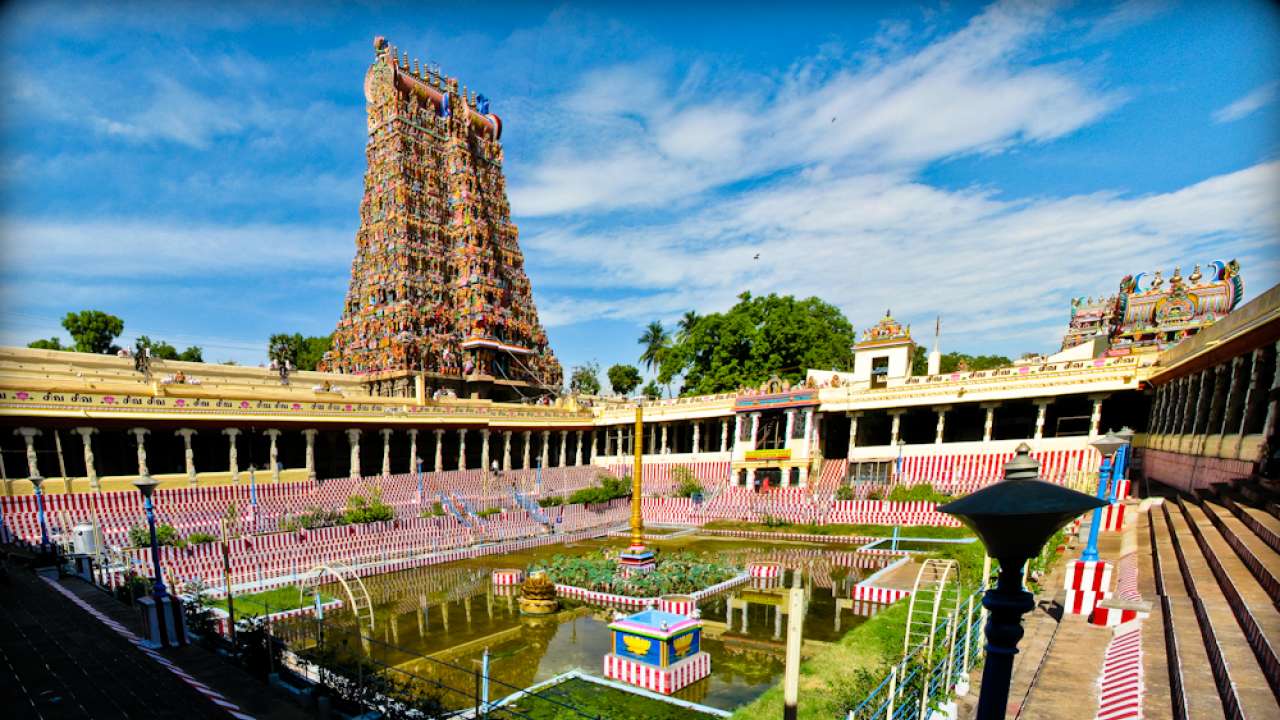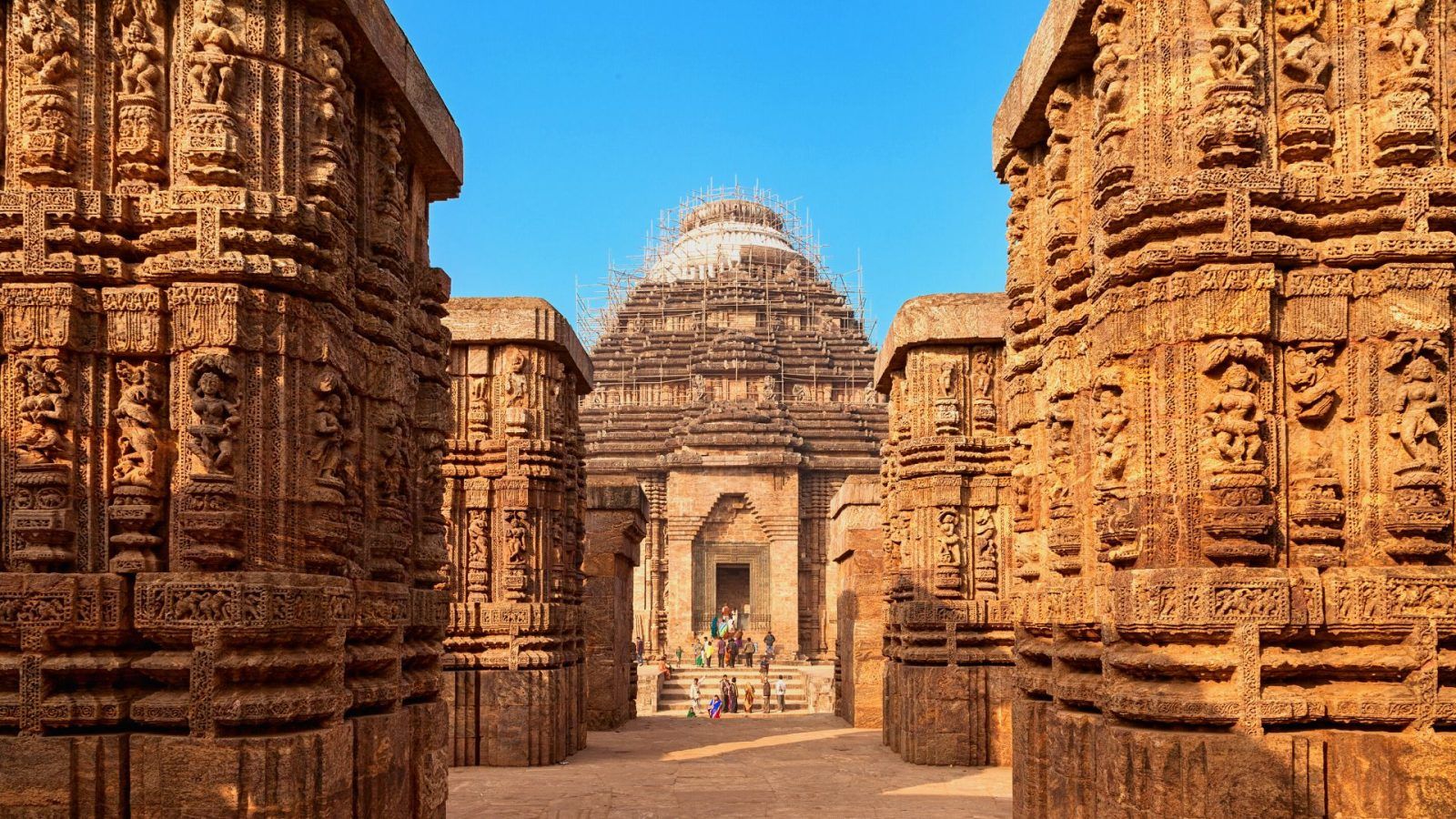
With one of the greatest civilisations in the world, that is, the Indus Valley civilisation and with the emergence of many subsequent empires and kingdoms, India became one of the world’s archaeological gems with thousands of these archaeological sites, many of which are accessible to travellers & tourists. So, undoubtedly, these monuments are like a treasure for our nation and a symbol of pride for their civilisations.
Therefore, these need to be protected as they remind us of our heritage. Otherwise, the situation of these gems would become similar to that of the Taj Mahal like the acid rain reacting with the marble of the Taj Mahal is deteriorating its colour. The AMASR Act is the one which was passed in 1958 for the preservation of these archaeological and historical monuments in India. So, what exactly is this AMASR Act?
This is what's discussed in this article, along with the list of archaeological sites & ancient monuments and the need for the amendment of the AMASR Act etc. So, let’s get started.
What is the AMASR Act 1958?
The AMASR Act was first passed in 1958 to preserve archaeological and historical monuments and sites, regulate excavations, and safeguard sculptures, and carvings, with other objects. No construction activities in an area of 100 meters around protected monuments can be done, this measure was taken in order to protect such monuments from any damage, which can be extended by the Central Government whenever & wherever it is needed. However, an amendment to this act was proposed in 2017 with the aim of enabling the government to undertake public works in these prohibited areas.
/content-assets/8ef91b2f0fb840f19c4682d2ca736dbb.jpg)
This was the Ancient Monuments and Archaeological Sites and Remains (Amendment) Bill, 2017, introduced in Lok Sabha on 18th July 2017 by the Minister of Tourism and Culture, Dr Mahesh Sharma. The Amendment Bill amends the Ancient Monuments and Archaeological Sites and Remains Act of 1958, which was passed in 2017 but after the changes suggested by the Select Committee at that time, the bill is now expected to be re-introduced in the second half of the Budget Session (from March 13th).
What do you mean by “ancient monument” and “archaeological sites”?
As per the original 1958 Act, “ancient monument” is defined as “any structure, erection, or monument, or any tumulus or place of interment, or any cave, rock-sculpture, inscription, or monolith which is of historical, archaeological, or artistic interest and which has been in existence for not less than 100 years”.
“Archaeological sites and remains” means “any area which contains or is reasonably believed to contain ruins or relics of historical or archaeological importance which have been in existence for not less than 100 years”
List of Archaeological sites in India
Here’s a list of a few of the famous archaeological wonders of India:
1. Kumbhalgarh Fort
:max_bytes(150000):strip_icc():format(webp)/GettyImages-186361655-5c1b7361c9e77c00019049d3.jpg) Source: tripsavvy
Source: tripsavvy
Kumbhalgarh Fort is one of the largest hilltop forts in the world, ruled by a Rajput clan called the Sisodia Rajputs, and one of the six spectacular Hill Forts of Rajasthan included in UNESCO’s list of World Heritage sites.
2. Jaisalmer Fort
 Source: Jaisalmertourism
Source: Jaisalmertourism
Jaisalmer Fort- This was constructed by a Bhati Rajput ruler Rawal Jaisal in the 12th century AD, who named the fort after himself. The Rajputs ruled Jaisalmer until it was captured by Alauddin Khilji and his forces in the 13th century, who ruled there for 9 years. Then again, this fort was captured in the 16th century, but this time by the Mughals under their emperor Humayun.
3. Meenakshi Amman Temple
 Source: dnaindia
Source: dnaindia
Meenakshi Amman Temple- This was one of the highlights of Madurai in Tamil Nadu, dedicated to the Hindu goddess Parvati, the companion of the deity Lord Shiva. Madurai has been inhabited for more than two thousand years. It is not only one of the oldest cities in India but even the oldest continuously inhabited city in the world.
4. Khajuraho Temples
 Source: thewire
Source: thewire
Khajuraho Temples- The famous Khajuraho group of monuments can be found in the Chhatarpur district of Madhya Pradesh, specifically in the town of Khajuraho, which is famous for its erotic sculptures. These temples were built in the 10th and 11th centuries by the Chandela Rajput dynasty. Most of these temples are dedicated to Hindu deities or the Jain sect.
5. Konark Sun Temple
 Source: travelandleisureasia
Source: travelandleisureasia
Konark Sun Temple is also called the Black Pagoda in Odisha; as per the name itself, it is dedicated to the Sun and is built in the shape of an Indian chariot with wheels carved beside the temple. The Eastern Ganga Dynasty built the temple during the mid-13th century. The temple is listed in UNESCO’s World Heritage Sites and is significantly one of the 7 Wonders of India.
6. Nalanda University
 Source: archaeowanderer
Source: archaeowanderer
Nalanda University- One of the oldest centres of higher learning & education and an ancient Buddhist Monastery in India, is located in Bihar (which was the ancient kingdom of Magadha). The University was constructed by the Gupta and the Pala Empires, which flourished later as a significant learning centre before the Mamluk Dynasty destroyed it. It was an important trade site in Magadha visited by Gautama Buddha, Lord Mahavira & the Jain Tirthankaras.
8. Hampi Village
 Source: Karnataka Tourism
Source: Karnataka Tourism
Hampi is located in Karnataka and is popular for containing one of the largest archaeological sites in India. It is also another of India’s UNESCO World Heritage Sites. Hampi Village is home to the ancient ruins of Vijaynagar city, which was the capital of the ancient Indian Vijaynagar Empire. It is said to have had a rich archaeology of the once prosperous city of the now-extinct kingdom Virupaksha Temple.
List of ancient/ historical monuments in India
| State |
Monuments |
City |
Who Built it? |
|
Bihar
|
Golghar |
Patna |
British Govt. |
| Pathar Ki Masjid |
Patna |
Pervez Shah |
| Sher Shah’s Tomb |
Sasaram |
Mir Muhammad Aliwal Khan |
| Vishnupad Temple |
Gaya |
Rani Ahilyabai |
|
Delhi
|
Feroz Shah Kotla |
Delhi |
Ferozshan Tughlaq |
| Hauz Khas |
Delhi |
Alauddin Khilji |
| Humayun Tomb |
Delhi |
Empress Bega Begum |
| Jama Masjid |
Delhi |
Shahjahan |
| Jantar-Mantar |
Delhi |
Sawai Jai Singh |
| Khirki Masjid |
Delhi |
Ghyasuddin Tughlaq |
| Lakshmi Narayan Temple |
Delhi |
Birla Family |
| Moti Masjid |
Delhi |
Aurangzeb |
| President House |
Delhi |
British Govt. |
| Purana Qila |
Delhi |
Sher Shah Suri |
| Qutub Minar |
Delhi |
Qutubuddin Aibak |
| Red Fort |
Delhi |
Shahjahan |
| Safdarjung Tomb |
Delhi |
Shuja-ud-daula |
|
Gujarat
|
Sabarmati Ashram |
Ahmadabad |
Mahatma Gandhi |
|
Jammu and Kashmir
|
Charar-E- Sharif |
Budgam |
Zainul Abedin |
| Nishat Garden |
Srinagar |
Asaf Ali |
| Shalimar Garden |
Srinagar |
Jahangir |
|
Karnataka
|
Gol Gumbaz |
Bijapur |
Yaqut of Dabul |
|
Maharashtra
|
Ajanta- Ellora Caves |
Aurangabad |
Gupta rulers |
| Bibi Ka Maqbara |
Aurangabad |
Aurangzeb |
| Elephanta Cave |
Mumbai |
Rashtrakuta rulers |
| Gateway Of India |
Mumbai |
British Govt. |
| Kanheri Fort |
Mumbai |
Buddhists |
|
Odisha
|
Jagannath Temple |
Puri |
Anantavarman Ganga |
| Sun Temple |
Konark |
Narasimhadeva I |
|
Punjab
|
Golden Temple |
Amritsar |
Guru Ramdas |
|
Rajasthan
|
Adhai Din Ka Jhonpra |
Ajmer |
Qutubuddin Aibak |
| Bharatpur Fort |
Bharatpur |
Raja Surajmal Singh |
| Ajmer Sharif Dargah |
Ajmer |
Sultan Shyasuddin |
| Dilwara Jain Temple |
Mount Abu |
Siddharaja |
| Hawa Mahal |
Jaipur |
Maharaja Pratap Singh |
| Jaigarh Fort |
Jaipur |
Sawai Jai Singh |
| Jodhpur Fort |
Jodhpur |
Rao Jodha |
| Nahargarh Fort |
Jaipur |
Sawai Jai Singh |
| Vijaya Stambha |
Chittorgarh |
Maharana Kumbha |
|
Tamil Nadu
|
Saint George Fort |
Chennai |
East India Company |
|
Telangana
|
Char- Minar |
Hyderabad |
Quli Qutub Shah |
| Makka Masjid |
Hyderabad |
Quli Qutub Shah |
|
Uttar Pradesh
|
Agra Fort |
Agra |
Akbar |
| Akbar Rsquo Tomb |
Sikandra |
Akbar |
| Anand Bhawan |
Allahabad |
Motilal Nehru |
| Aram Bagh |
Agra |
Babur |
| Bada Imambara |
Lucknow |
Asaf-ud-daula |
| Chhota Imambara |
Lucknow |
Muhammad Ali Shah |
| Deewan-E- Khas |
Agra Fort |
Shahjahan |
| Fatehpur Sikri |
Agra |
Akbar |
| Tomb of Itmad-Ud-Daula |
Agra |
Nurjahan |
| Jama Masjid |
Agra |
Shahjahan |
| Moti Masjid |
Agra |
Shahjahan |
| Sati Burj |
Mathura |
Raja Bhagwan Das |
| Shish Mahal |
Agra |
Shahjahan |
| Taj Mahal |
Agra |
Shahjahan |
|
West Bengal
|
Shantiniketan |
West Bengal |
Rabindranath Tagore |
| Belur Math |
Kolkata |
Swami Vivekananda |
| Victoria Memorial |
Kolkata |
British Govt. |
Why does the government want to amend the AMASR Act?
The Central Government stated that, the “prohibition of new construction within prohibited areas of a protected area or protected monument is adversely affecting the various public works and developmental projects of the central government”.
What is the present status of the AMASR Amendment bill?
This Bill was introduced in Lok Sabha in 2017 & passed in 2018, which was then referred to a Select Committee in July 2018, headed by former Rajya Sabha member Vinay P. Sahasrabuddhe. In its report, the Select Committee recommended deciding the area limit for prohibiting construction on a case-by-case basis rather than bringing a fixed blanket limit of 100 metres as provided in the original 1958 Act.
-
The Select Committee even looked upon the definition of public works specified in the Amendment Bill, and noted that it does not cover public utility projects such as the Metro construction.
-
After the examination, the committee submitted its report in February 2019 and recommended the passage of the Amendment bill after consultation with central and State governments along with various relevant departments.
-
So, the Ancient Monuments and Archaeological Sites and Remains (AMASR) (Amendment) Bill is expected to be reintroduced in the second half of the Budget Session by the central government only after the recommended changes has been made.
Key Features of the Act
1. Construction in Prohibited Areas
As per the act, the prohibited areas are defined as those areas that are within 100 metres of the protected monument and the central government is empowered to extend this area
2. Public Works
The act introduces the term known as the “Public Works”. This includes the construction of infrastructure as planned by the Government of India & such infrastructures must be in compliance to public safety and security.
3. Impact Assessment
The National Monument Authority must do an impact assessment before executing the public works. The authority must conduct three types of impact assessments such as the visual impact, archaeological impact, and heritage impact.
Conclusion
The AMASR Act was amended in the year 2010, which brought the National Monument Authority. The amendment is being introduced as the original act prohibits new construction within the monument, thus, affecting the developmental works in the national monuments. The major objective is to amend Section 20A of the act which hinders development activities. So, what do you think? Is this amendment needed or will it hinder the preservation of such monuments?